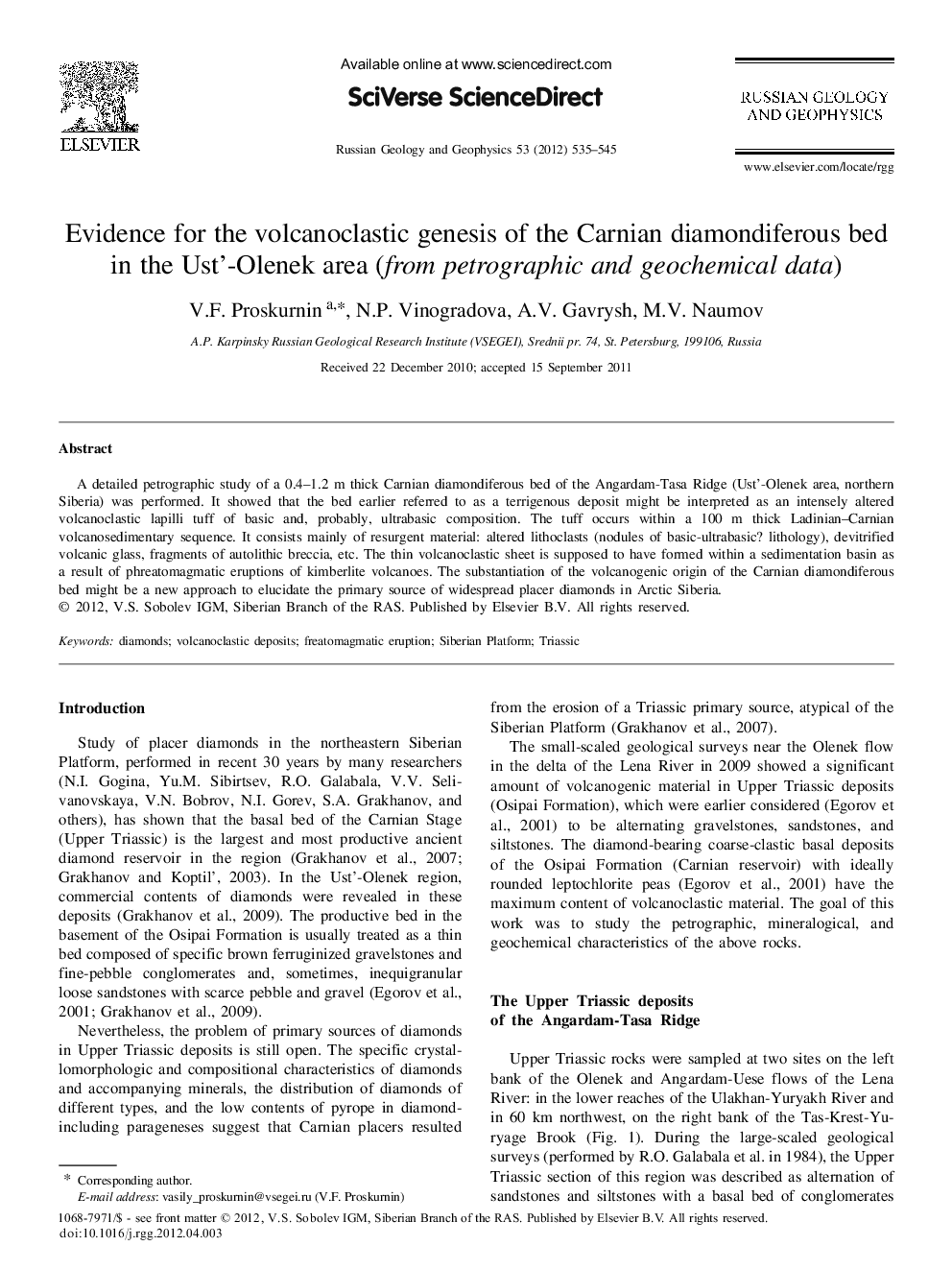| Article ID | Journal | Published Year | Pages | File Type |
|---|---|---|---|---|
| 4739316 | Russian Geology and Geophysics | 2012 | 11 Pages |
A detailed petrographic study of a 0.4–1.2 m thick Carnian diamondiferous bed of the Angardam-Tasa Ridge (Ust’-Olenek area, northern Siberia) was performed. It showed that the bed earlier referred to as a terrigenous deposit might be interpreted as an intensely altered volcanoclastic lapilli tuff of basic and, probably, ultrabasic composition. The tuff occurs within a 100 m thick Ladinian–Carnian volcanosedimentary sequence. It consists mainly of resurgent material: altered lithoclasts (nodules of basic-ultrabasic? lithology), devitrified volcanic glass, fragments of autolithic breccia, etc. The thin volcanoclastic sheet is supposed to have formed within a sedimentation basin as a result of phreatomagmatic eruptions of kimberlite volcanoes. The substantiation of the volcanogenic origin of the Carnian diamondiferous bed might be a new approach to elucidate the primary source of widespread placer diamonds in Arctic Siberia.
